TLDR About 5% of Thai university girls aged 17-19 have polycystic ovary syndrome, with moderate acne being a strong risk factor.
The study conducted at Mahidol University in Bangkok surveyed 548 female adolescents aged 17-19 years and found a 5.29% prevalence of polycystic ovary syndrome (PCOS) using the Rotterdam criteria. Out of the initial group, 279 were identified as probable cases, and 248 underwent further evaluation. The research identified moderate acne and oligo- or amenorrhea as significant associated factors, with moderate acne being the strongest risk factor for PCOS, increasing the odds by up to 31.69 times. The study also noted the variability in PCOS phenotypes and the usefulness of ultrasound in diagnosis, even for obese girls. It highlighted the need for further community-based studies to better understand PCOS prevalence among Thai adolescents. The study was supported by the Faculty of Medicine, Ramathibodi Hospital, Mahidol University.
 767 citations
,
September 2016 in “Human Reproduction”
767 citations
,
September 2016 in “Human Reproduction” Polycystic ovary syndrome affects about 6-10% of women, with varying symptoms and the need for standardized global definitions.
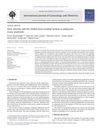 22 citations
,
August 2013 in “International journal of gynaecology and obstetrics”
22 citations
,
August 2013 in “International journal of gynaecology and obstetrics” Acne severity in women with PCOS is linked to younger age, lower body weight, and more body hair, but not to hormone levels.
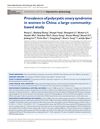 271 citations
,
June 2013 in “Human Reproduction”
271 citations
,
June 2013 in “Human Reproduction” PCOS is common among Chinese women of reproductive age and linked to serious metabolic and reproductive issues, especially in obese women.
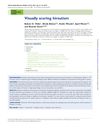 288 citations
,
June 2009 in “Human reproduction update”
288 citations
,
June 2009 in “Human reproduction update” The modified Ferriman-Gallwey method is a useful tool for diagnosing hirsutism.
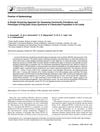 120 citations
,
June 2008 in “American Journal of Epidemiology”
120 citations
,
June 2008 in “American Journal of Epidemiology” A simple screening method found that 6.3% of women in a semiurban area in Sri Lanka have polycystic ovary syndrome, with most showing menstrual irregularities.
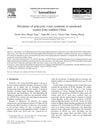 121 citations
,
April 2008 in “European Journal of Obstetrics & Gynecology and Reproductive Biology”
121 citations
,
April 2008 in “European Journal of Obstetrics & Gynecology and Reproductive Biology” Many women in southern China have polycystic ovary syndrome, with some symptoms differing from Western women.
 4809 citations
,
January 2004 in “Fertility and Sterility”
4809 citations
,
January 2004 in “Fertility and Sterility” The 2003 consensus updated PCOS diagnosis criteria and highlighted increased risks of diabetes and heart disease for those affected.
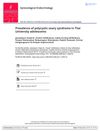 12 citations
,
December 2017 in “Gynecological Endocrinology”
12 citations
,
December 2017 in “Gynecological Endocrinology” About 5% of Thai university girls aged 17-19 have polycystic ovary syndrome, with moderate acne being a strong risk factor.
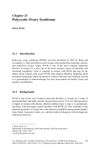 October 2013 in “Springer eBooks”
October 2013 in “Springer eBooks” PCOS is a hormonal disorder causing infertility and menstrual problems, often linked to obesity and can lead to acne, treated with hormonal and insulin-sensitizing medications.









